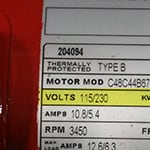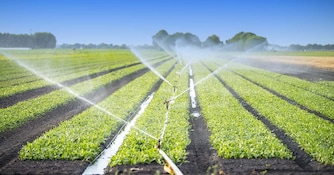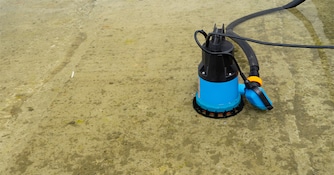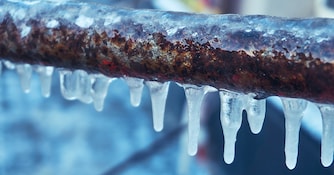
Sprinkler Pump Buyer's Guide
How do you keep your grass green and garden growing all summer long without wasting tons of water?
The answer is simple: Sprinkler Pumps. Sprinkler pumps are designed to save you money and conserve resources by pumping water from a nearby source.
By providing a steady flow of water, without requiring high amounts of pressure to push water out of a sprinkler head, these pumps are great for homeowners and property managers looking for an easy and economical way to keep their lawns green and gardens growing.
How to Choose a Sprinkler Pump in 6 Easy Steps:
- Size Your Irrigation Pump Properly
- How High Are You Pumping?
- How Far Are You Pumping?
- Power Requirements Checklist
- Prime The Pump
- Choose the Right Location
1. Sizing Your Irrigation Pump Properly
To determine the correct sprinkler pump size, you'll first need to figure out how many sprinkler heads you have along with their GPM (gallons-per-minute) and PSI (pounds-per-square-inch) requirements.
All sprinkler heads are rated at a specific GPM and PSI. Typically, you're going to use sprinkler heads of the same GPM and PSI ratings throughout your system. Assuming you're using the same exact sprinkler heads throughout your irrigation system, the PSI will remain the same.
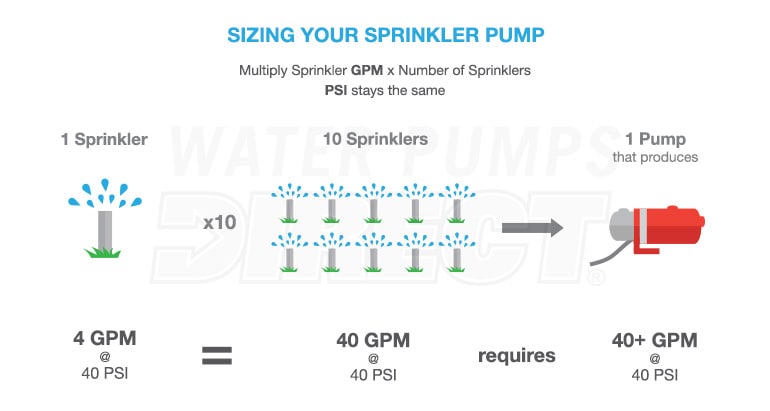
To figure out the total GPM requirement for your system, you'll add up the GPM requirements for all sprinkler heads. If you have 10 heads rated at 4 GPM each, you'll have a system requirement of 40 GPM.
Since each head is rated at 40 PSI, and the PSI stays the same throughout the system, you need to ensure that the pump provides that 40 PSI at your total GPM requirements. In this example, it's 40 GPM at 40 PSI.
However, don't oversize your pump too much. Doing so could blow out your sprinkler heads or cause a sporadic and disorganized spray pattern. Size your pump as close to your system's requirements as possible, and you'll be fine.
2. How High Are You Pumping Water?
The amount of lift required to move the water from its source to your pump is another important factor to consider when planning to install a sprinkler pump. The rise in elevation (referred to as "suction head") must be under 25 feet high, but ideally should be no more than 5 feet high.
The suction head limitation will be listed as a spec on each pump, but should never exceed 25 feet at sea level. Determining the suction head requirements of your sprinkler irrigation system may seem intimidating, but it's actually pretty simple. Measure the distance from the surface of the water source straight up until it meets the elevation of your pump.
That's your suction head. It's much easier for a pump to push water out than it is for it to pull water upward, so it's best to install your irrigation pump as close to the water source as possible without risking water-damage to the pump. While it's easier for the pump to push the water, it still has head or "lift" limitations on the discharge side of the pump, just like it does on the suction side.
That could be a maximum head lift of 50, 80, 120 feet or more, depending on the pump. The suction and discharge head, when added together, will then be your "Total Head" lift.
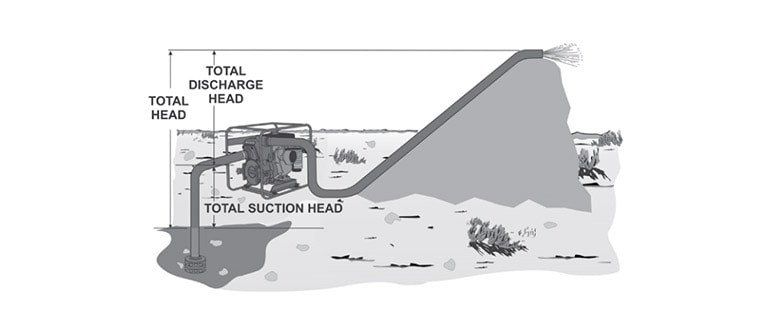
3. How Far Are You Pumping Water?
In addition to considering the suction head, you'll also need to consider how far you're pumping the water to reach your sprinkler heads. The distance in which you're pumping the water can affect the water pressure.
Generally, if the distance from your pump to the furthest sprinkler is under 100', the standard 1-1/2" discharge pipe will work. But, if the distance to your furthest sprinkler head is 100'-300', you'll need to go to a 2" discharge pipe instead. If the distance from your irrigation pump to your furthest sprinkler head is 300'-600', you'll need to increase the diameter of your discharge pipe to 2-1/2".
Basically, you need to increase discharge pipe diameter by one size for every 300' of horizontal pumping distance in order to maintain the best possible flow and pressure. This would be the same on the suction side of the pump when running a long distance. A basic friction loss chart will help in determining your pipe type and diameter based on pumping distance and fittings used.
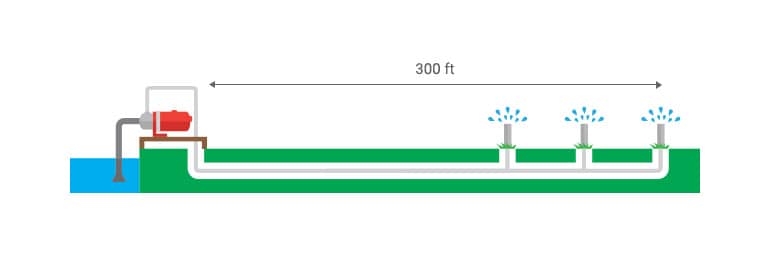
4. Power Requirements
Because these pumps don't run on luck and good intentions, you'll need to be sure you have the correct power supply. Most pumps are dual-voltage rated, which means that they will operate at either 115 volts or 230 volts.
However, some of the larger pumps that are 2-1/2 HP, 3 HP, and larger are rated at 230 volts or 208/230/460 3-phase. If you have no electricity available where you're installing your sprinkler pump, you'll have to choose a gas-powered pump as an alternative. Depending on your requirements, it may require a high-pressure gas pump.
5. Priming Method
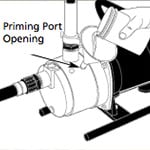
Most pumps are self-priming, but some will require you to prime the pump by filling the priming port and pump housing with water upon initial installation to force any air out and allow for the impeller to start sucking water. Any air pockets left in the lines or the pump will cause the pump to become air-locked.
An air-bound pump will not operate properly until the air is removed and replaced by water, and could cause damage to your pump if not corrected. As long as a check or foot valve is installed on the suction pipe, and you never lose suction, you should not need to re-prime the pump.
6. Choosing a Location For Your Sprinkler Pump
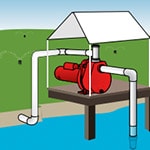
Because sprinkler pumps aren't designed for suction head over 25 feet, you want to install them as close to the water source as possible. Irrigation pumps aren't capable of sucking water beyond 25 feet above their water source. If you have to locate your pump higher above the water source, consider a different type of pump.
Also, be sure to protect your pump from the elements. Your sprinkler pump should be located in a cool, dry area where it won't get rained on, but will still have optimal ventilation. The idea here is to keep it dry, keep it out of direct sunlight, and keep it well ventilated so it doesn't overheat or become flooded.

